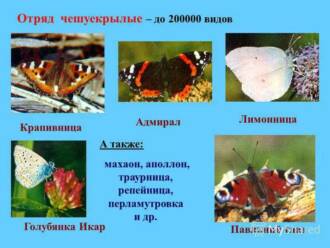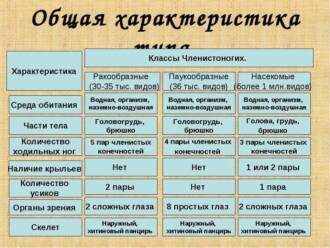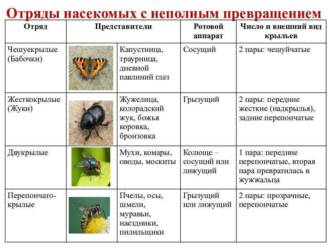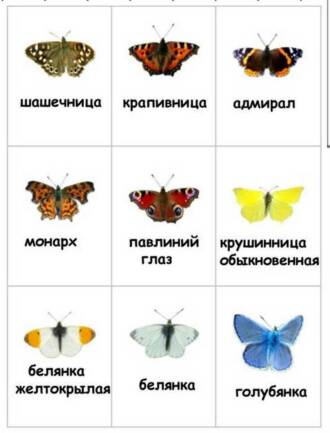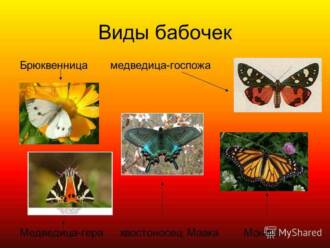There are various and sometimes conflicting classifications of butterflies. The easiest way is to divide them into nocturnal (or moths) and diurnal. According to another system, all butterflies, with the exception of a few ancient families, belong to a group of so-called Lepidoptera. Club-whiskered, or diurnal, butterflies are best known in it - the last segments of their antennae are expanded at the end and form a thickening, or club.
In addition, at rest, they do not fold their wings like a roof on their backs, but keep them outstretched or lift them up and press one to the other.

There are more than 200 families of butterflies in the world fauna. Let's name just a few of them. The family Real moths includes small butterflies with a rudimentary proboscis. Their larvae feed on tinder fungus, food, horn matter and animal hair. Carpet, fur coat and clothes moths can live in houses and apartments. All of them at the caterpillar stage feed on fur, woolen fabrics, damage feathers and skin.
The clothes moth is smaller than the other two: its wingspan is only 9-12 mm. A very large family of Leafworms is represented by medium-sized butterflies with colorfully colored wings. They got their name from the fact that in many species of caterpillars they twist leaves around themselves. An extremely dangerous forest pest is the green oak leafworm. Once every few years there are outbreaks of mass reproduction of this butterfly, and then its larvae completely eat the leaves of oaks over very large spaces. "Wormy" apples and plums are the result of the settlement in them of caterpillars of other members of this family: apple and plum codling moths.
Outwardly similar to wasps, glass butterflies, thanks to their color and transparent, without scales, wings avoid the fate of being eaten. Without touching wasps, birds do not peck at butterflies. Caterpillars of some glassware live inside the trunks and branches of trees, others - in the underground parts of grasses.
Serious pests of the forest are moths from the Woodworm family, flying in the second half of summer. Their larvae develop in the wood of old trees. Having completed development, these large, red-colored creatures crawl along the ground in search of a place to pupate. Once upon a time, such a bright "bloody" caterpillar caught the eye of a superstitious person not far from the cemetery and was called the "worm of the dead."
In the family of small and medium-sized moth butterflies, there are those that do great harm to humans. These are meadow and corn moths, mill moth (caterpillars damage grain, flour, dried fruits).
Family Peacock eyes so named because each of the four wings of these butterflies has a very beautiful, really peacock-like eye. Adult insects are sometimes very large, and their huge caterpillars are covered with numerous warts. Peacock-eye pear, or large nocturnal peacock eye, is the largest Russian butterfly. Many species as rare and adorn the nature are listed in the Red Books of various states.
Butterflies from the family hawks are protected by law and are considered the best flyers. They are not only unusually fast (some reach speeds of over 50 km / h), but also maneuverable. Moreover, they are able to freeze in the air and, hovering over a flower, get nectar from it without sitting on the corolla. The front wings of hawks are narrow and long, while the hind wings are short and wide. The caterpillars of these butterflies are easily recognized by the pointed spike at the rear end of the body.
In this group of butterflies, many species are interesting for their behavior. For example, Dead Head, the owner of a peculiar pattern on the back is a real night robber. This sweet lover steals honey from bees, piercing honeycombs with his strong proboscis. And in order to dull the vigilance of sleepy owners, the hawk buzzes.
In the real silkworm family, there is only one genus with a single species - the silkworm. This butterfly has been bred by people since time immemorial, but it does not occur in nature. It is believed that the Chinese were the first to "domesticate" the silkworm about four thousand years ago. Caterpillars are kept in special rooms and fed with mulberry leaves. When development ends, the larvae pupate, weaving a silky cocoon for themselves. Then the pupae are killed by steam, and the cocoons are unwound on special devices. It turns out a natural silk thread.
Moth moths are a very species-rich and difficult-to-identify group. This family got its name because the moth caterpillars move by pulling the rear end of the body to the front and, as it were, folding in half. It is these movements that people make, measuring the length in spans, that is, the distance between the spread thumb and forefinger. These butterflies are modestly colored and inconspicuous. Even more inconspicuous are their caterpillars, which at rest are very similar to a leaf petiole or twig.
The larvae of some species of this family can cause damage to the forest or garden. So, the winter moth eats the buds and leaves of fruit trees, and the pine moth harms pine, cedar and spruce. A small family of marching silkworms unites butterflies, the development of which occurs on trees. Sometimes among these insects there are outbreaks of mass reproduction. Then their larvae gather in large groups and move, lined up in a column one after another. The spectacle of the "marching formation" of such heavily hairy caterpillars fascinates not only with the number of individuals, but also with the consistency of their actions.
Outbreaks of numbers are also characteristic of butterflies from the Volnyanka family - golden tail, yellow tail, nuns, gypsy moth. The latter species is so named for the sharp difference between the sexes: females are large and have white wings, while males are noticeably smaller and brown. During the years of mass reproduction, gypsy moth caterpillars become the scourge of gardens and forests and cause real disasters.
Most species (over 25 thousand) in the family of nocturnal scoop butterflies. They are easily recognizable by their short, heavily pubescent body and thick abdomen, as well as by their characteristic wing pattern. In many scoops, it consists of wavy stripes and stains. The largest (and protected!) species in Russia, the ribbon bugs, are an excellent example of camouflage. Their front wings are so similar to the bark of trees that it is difficult to distinguish a butterfly sitting on a trunk even in close proximity. But the hind wings of the tapeworms, on the contrary, are very bright, with blue, orange or crimson stripes.
There are many species in this family that are harmful to agriculture and forestry. For example, caterpillars of the winter scoop eat the underground parts of winter crops. Bright and variegated, the bear butterflies got their name from their unusually heavily pubescent caterpillars. Such a cover saves the larvae from birds - the hairs of their body are hard, prickly and burning. These caterpillars feed mainly on grasses and do not cause serious harm. One of the groups of bears - lichen butterflies - switched to feeding on lichens growing on tree trunks.
Family Cavaliers, or Sailboats, are the most beautiful butterflies in our country. Their hind wings end in a kind of pigtail. They can soar, i.e. fly without flapping wings. The caterpillars of sailboats have an odorous gland on their chest, which, in case of danger, extends in the form of a fork. In central Russia there are swallowtail, subalirium, black Apollo (mnemosyne). All these species are quite rare and are listed in various Red Books.
The most beautiful gentlemen live in the tropics. These are Indonesian birdwings (ornithopters). One of them is so magnificent in its coloration that it is called the paradise ornithopter.
Family Belyanki known to many since childhood. related to him Cabbage butterfly, hawthorn And Lemongrass - one of the most common Russian butterflies. In total, there are about 1500 species of whites in the world. Many of them are characterized by an external difference between male and female individuals. So, in a male cabbage, the front wings, unlike the female, are devoid of black spots, and in lemongrass (another name for this butterfly is buckthorn), the males are yellow, and the females are pale green. Whites also include swede, turnip and very beautiful butterflies — jaundice.
Butterflies from the family Marigolds distinguished by underdeveloped forelegs and several swollen veins at the base of the forewings. Their coloration is very modest - brown, dark brown or red. But on the wings there are often various spots-eyes. The caterpillars of these butterflies feed on cereals. Many of the marigolds have names taken from Greek mythology: circe, galatea, briseida, antaeus, ishgolit, vixen.
Representatives of the Nymphalidae family also have underdeveloped front legs, but the veins on the front wings are not swollen. In addition, they are much brighter and more beautiful than marigolds. This is the most magnificent and numerous family of diurnal butterflies. Everyone knows such nymphalides as Hives, day Peacock eye, mourning. Their other types are checkers, mother-of-pearl.
Relatively small butterflies from the family pigeons do not always live up to their name. Often only males have the corresponding color, and females are painted in modest brown tones. There are species with brown, bright red and even green wings. Caterpillars of many pigeons feed on grasses (for example, sorrel or clover), and therefore these butterflies are usually found in meadows. Larvae of some species settle in anthills and feed on aphids, and sometimes ant eggs. The owners also do not remain in the loser - a piece of iron on the back of the caterpillar secretes sweet juice if it is tickled with antennae ...
Read more:
